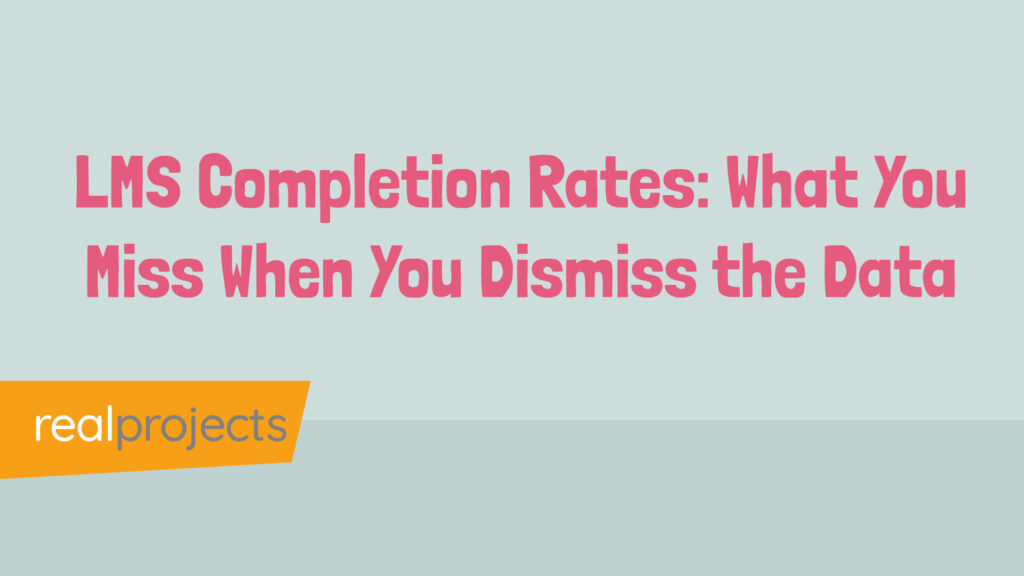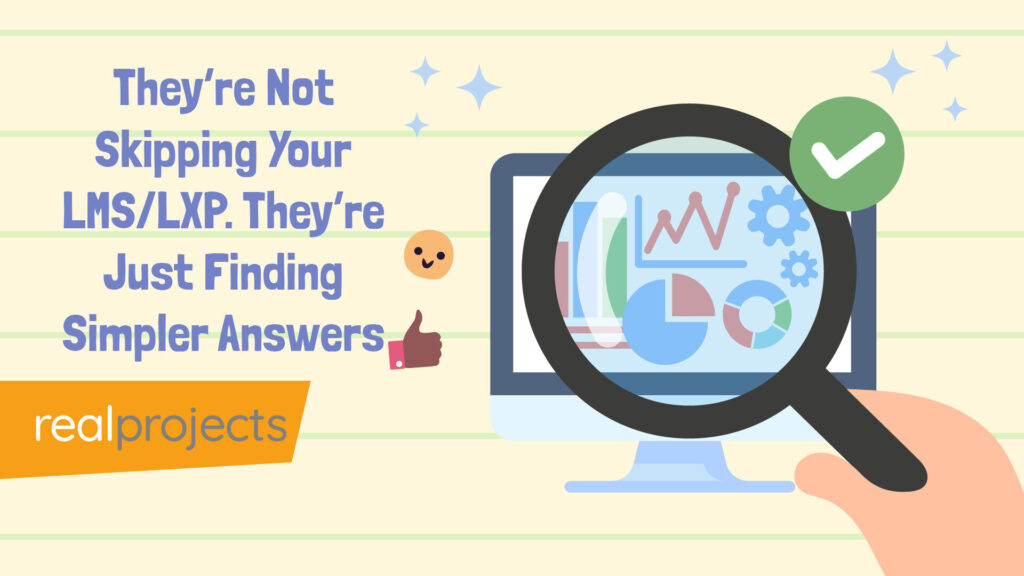Navigating the world of elearning course libraries can be overwhelming.
Where do you start?
With so many pricing models, contract terms, and content options, it’s easy to end up paying for more than you need, or worse, committing to a catalogue that doesn’t truly serve your organisation’s goals.
It doesn’t need to be like that.
In this guide, we’ll demystify the buying process and walk you through the critical factors to consider before making a purchase decision.
From comparing pricing structures to evaluating content quality and leveraging data-driven insights, you’ll learn exactly how to invest in an elearning library that delivers real value, drives engagement, and aligns with your training objectives.
Don’t stop reading now!
In many organisations, confusion around elearning pricing models remains a major barrier to implementing a successful content library.
Providers can vary significantly in how they charge: some offer a single annual fee for an entire course library, while others use band-based pricing that forces you to pay for large user brackets (for example, “up to 5,000 employees”) even if you only need to train a fraction of that.
We’ll look at the different pricing models and what to look out for.
Another common approach is “active seats,” where only a set number of users can access training at the same time.
While it seems flexible, it can become frustrating if training demand exceeds those seat limits.
Beyond pricing, access periods and renewal terms can cause headaches—sometimes you only get 30 days of access, or you might face a steep price jump after the first contract year.
Another frequent oversight is the quality and relevance of the content you pay for.
Some libraries bundle large quantities of PDFs, infographics, or outdated topics that rarely align with an organisation’s current needs. Do you really need a bundle of PDF and infographics?
Meanwhile, many buyers overlook valuable usage data from their existing Learning Management System (LMS) or Learning Experience Platform (LXP).
By tracking completion rates and engagement metrics, you could avoid paying for underused content and gain insights to guide strategic decisions.
However, this data often goes unused—an opportunity missed when it comes to optimising return on investment.
This guide tackles these core challenges and highlights missed opportunities for better ROI.
By focusing on transparent pricing models, flexible contract terms, data-driven decision-making, and relevant content selection, you’ll learn how to navigate the complexities of buying an elearning course library.
Ultimately, the goal is to make sure you pay only for what you need, secure real value from your provider, and build a foundation for an effective, long-term elearning strategy.
Keep reading!
Understanding Key Elearning Pricing Models
Pricing for elearning content can vary in complexity, making it tough to compare one provider to another. But it doesn’t need to be like this.
Look out for companies that offer simple, easy to understand pricing when you are looking at elearning course libraries.
Some companies still offer a single annual subscription for full access to their library—though this model is becoming less common.
Others will calculate cost based on the number of employees times the number of courses, which can quickly become expensive if you have a large workforce. Look out for this!
A more flexible version involves letting you pick the courses you need and then choosing how many people will take them—ideal if you only want a specific handful of topics.
Be careful that this doesn’t end up more expensive than you initially think when you start.
Band-Based Pricing
A popular option is band-based pricing, where providers place you into a bracket such as “up to 1,000 employees” or “up to 5,000 employees.”
While it simplifies billing, this structure can feel unfair if you barely exceed a lower tier or if you know you’ll never come close to using the upper limit.
One practical way to assess value here is dividing the total annual cost by your actual headcount to see a rough per-person price.
Individual Marketplace Purchases
For organisations with minimal training requirements, or without a formal LMS, individual marketplaces can be a straightforward solution.
You might only need 10, 15, or 20 licences for a handful of courses. Such transactions often happen via a credit card checkout, making it an easy entry point for small teams.
There are a number of options where you are buying elearning courses from marketplaces, inidividual companies and course aggregators.
Active Seats (“Concurrent User”) Model
Another approach is paying for a set number of “active seats.” For instance, you might purchase 100 active seats, even if your organisation has 1,000 people.
Only 100 learners can be active at one time, which can be cost-effective if your workforce trains in waves.
However, you must monitor usage patterns to ensure you’re not constantly hitting that seat limit.
Look out for suppliers that automatically trigger another charge if you use more active seats that you initially agreed!
Why Pricing Transparency Matters
Regardless of the model you encounter, it’s crucial to clarify how many users you can train at once, the duration of access (some plans might limit you to 30 days or one year), and how you’ll be charged for going over your limit.
No-one wants surprise charges, but they do happen.
If you’re on the cusp of a higher band or need additional active seats, find out if the cost will jump dramatically.
A transparent provider should share a clear rate card or at least give you quick, straightforward pricing upon request. Also look out for those customers who keep pushing its prices each year? Did you start on the lowest price and are now paying 5 times the price for the same product?
By evaluating your workforce size, training frequency, and likely course consumption, you can quickly narrow down which pricing structure delivers the best value for your organisation.
Cost & Contract Considerations
One of the most important steps in buying elearning content is clarifying what you’re getting for your money, and for how long.
Some providers limit your access period to as little as 30 days, while others might grant an entire year.
If you only learn about these time constraints after signing, you could end up paying extra for extensions or watch your content access abruptly expire.
Check out what happens if you do end the contract. What happens to the data and how does the end happen?
Renewal Surprises
A common pitfall is the second-year price hike, where an initial, seemingly competitive first-year deal jumps sharply when it’s time to renew.
For example, an organisation might start at a comfortable price point (like £5,000), then find that subsequent years soar and you can find a renewal price that can be as high as £25,000.
To avoid this, make sure your contract spells out renewal terms, price caps, or guaranteed rates for multi-year agreements.
Flexibility & Termination
Ask about termination clauses to confirm you’re not locked into a long-term deal if the content fails to meet expectations.
Some vendors allow you to cancel with minimal notice; others may lock you in for the full term even if usage is low.
If no clear exit path exists, you risk being stuck with a library that doesn’t serve your needs.
Potential Add-Ons & Hidden Fees
Vendors sometimes charge extra for features like additional languages, subject specialities, or advanced integrations.
These add-ons can significantly inflate costs if you need them mid-contract.
Clarify whether these features are included in your initial quote or if they carry separate fees.
Also confirm the process for adding more users—especially if you’re close to a higher pricing band.
Transparency in Pricing
Ultimately, transparency is key.
If it’s hard to get a clear price from a vendor, ask yourself why.
Some providers operating on certain public-sector frameworks publish their prices openly, making it much easier to compare. A quick look via G-Cloud can let you get prices.
Either way, you should have a quick, straightforward way to verify costs for extra users or additional content before signing.
Taken together, these contract details—access duration, renewal terms, termination flexibility, and hidden fees—define whether you’ll get real value from your investment or encounter unpleasant surprises.
Having them clarified from the start helps you plan around potential pitfalls and budget effectively for the long term.
Evaluating Course Quality & Relevance
While it’s easy to get drawn in by a large course catalogue, the real question is whether the content truly fits your organisation’s needs.
Many providers bundle an array of PDFs, infographics, or overly generic topics that hold little practical value.
If you’re paying for hundreds of resources yet only need a handful of relevant courses, you could end up wasting budget on items no one uses.
It’s worth looking beyond a vendor’s “showcase” courses—ask for a broader selection so you can see how they handle different subject areas or formats.
For example, you might need compliance modules, but discover that a provider’s library only offers a single, two-hour “click-through” course. Also you shouldn’t really need to sign an NDA to see a few courses!
Or perhaps you need a quick, concise training on something like manual handling but find only outdated PDFs. Examining a wider range of content helps you spot any red flags early.
Additionally, check whether updates are made regularly. If you see items that haven’t been refreshed in years, there’s a risk your learners will encounter outdated topics or irrelevant scenarios.
For specialised needs, you may also want to explore co-branding or custom content options.
Some vendors will create a tailored version of a course for your internal use and place a more general version in their main library.
This arrangement can be more cost-effective than building everything from scratch, and it ensures you get precisely what you need.
Ultimately, a library’s overall value hinges on the quality and variety of its courses, as well as how often they’re updated.
By vetting content relevance before signing a contract, you’ll avoid overpaying for modules that fail to engage your learners or support their real-world challenges.
Custom vs. Off-the-Shelf Content
Deciding whether to invest in custom created training or rely on off-the-shelf courses can be a tricky balancing act. Off-the-shelf content typically covers broad topics like compliance, cybersecurity, or leadership basics—making it an ideal solution when you need to launch quickly or meet common training requirements.
You might already have an elearning course library and are looking to expand the content available or you are creating a training curriculum. It is at this stage that you’ll be looking at both at off the shelf and custom content.
Off the shelf or ready made is often cheaper because it’s already developed and ready to deploy; some vendors even bundle periodic updates to keep these courses current.
However, while off-the-shelf content might be budget-friendly and rapid to implement, it doesn’t always address highly specific internal processes or industry nuances.
That’s where custom content comes into play. Though the upfront cost for custom development can be higher, it allows you to capture unique organisational knowledge or standards—ensuring the final product matches your culture and goals perfectly.
Some providers offer a blend of both: they maintain a core library of widely applicable courses while also creating co-branded or tailored modules for clients.
If you’ve got an off the shelf provider, contact them if you have a custom requirement. You might get a better price for custom development as an existing customer.
You might commission a compliance course written to your exact policies, then let the provider adapt a generic version for their broader library, reducing development fees.
This arrangement can be particularly cost-effective if you’ve already established a relationship with a vendor who understands your needs.
Ultimately, choosing between custom or off-the-shelf content shouldn’t be an all-or-nothing decision.
Many teams opt for a hybrid approach: use ready-made libraries for standard training topics and reserve budget for custom modules on specialised subjects.
By striking the right balance, you can address organisational priorities without stretching timelines or overspending on fully bespoke solutions.
The Role of Data in Purchasing Decisions
In many organisations, completion rates and platform usage metrics are underutilised when it comes to selecting and refining elearning content. These insights, however, can provide enormous value for procurement and strategic buying decisions.
By digging into data on who’s using which courses, and how often, you can pinpoint whether you’re paying for modules that go largely untouched. Elearning course libraries often come with a significant number of courses, important part of the process is understanding what content is available and how this matches to your L&D strategy.
Beyond showing learner engagement, usage data can reveal patterns in device preferences or times of day when training is most popular.
For example, if the majority of employees are accessing content on mobile devices, you’ll want to ensure the library you purchase is mobile-friendly. Similarly, if certain regions or departments show consistently low completion rates, you may need to investigate whether they face technical barriers or if the content simply isn’t relevant to their roles.
These metrics also help you spot courses with high drop-off rates, suggesting potential issues with the learning design or technical glitches. Rather than assuming a topic is uninteresting, the data might point to an overly long module, outdated media, or even a mismatch between the course level and your learners’ skill sets.
Armed with this knowledge, you can refine your content selections and avoid renewing modules that fail to deliver results.
In short, data-driven decision-making transforms your elearning investment into a more targeted, cost-effective effort.
By routinely examining usage and completion trends, you’ll not only justify budget spend but also ensure that new content aligns with actual learner needs—leading to higher engagement and a better return on your elearning library purchase.
Overcoming Barriers & Implementation Best Practices
Rolling out an elearning course library involves more than just uploading courses and hoping learners click through.
A common pitfall is treating it as a tick-box exercise—satisfying a requirement without establishing a proper project plan. Below are some best practices to address the most common barriers:
1. Cross-Departmental Collaborationcours
Bringing in IT, Marketing, and Finance early helps ensure a smoother, more impactful rollout.
- IT can confirm the platform’s compatibility with existing systems and assist with any technical challenges.
- Marketing can help “promote” the new library, creating internal campaigns or email reminders that highlight course benefits.
- Finance ensures you stay within budget and can track return on investment.
By involving these departments from the start, you avoid siloed decision-making and costly technical surprises down the line.
2. Promoting the Library Internally
Even if the content is high quality, employees won’t use it if they don’t know it exists or if it feels irrelevant. Some organisations find success with:
- Short Intro Videos: Teasers that show how specific courses solve real work problems.
- Targeted Emails or Newsletters: Highlight new or popular courses, possibly tied to current business initiatives.
- Leverage Influencers or Champions: Identify employees who are enthusiastic about learning and let them share success stories or tips with peers.
3. Building a Sustainable elearning Ecosystem
Uploading content once and hoping for engagement is a recipe for disappointment. Successful programmes require ongoing attention and updates.
- Regular Content Reviews: Phase out outdated modules and introduce new ones that align with evolving business needs.
- Aligning with Real Challenges: Identify the most pressing issues teams face (like having tough conversations or mastering new software) and ensure courses directly address them.
- Encouraging Discovery: Some learners enjoy finding courses on their own, so create categories, playlists, or search functions that make content easy to explore.
4. Ensuring Accessibility & User Experience
A library that isn’t user-friendly or inclusive can alienate segments of your workforce. Consider:
- Mobile-Friendliness: Confirm the platform works seamlessly on mobile devices for remote or on-the-go learners.
- Accessible Design: Include features like screen-reader compatibility, keyboard navigation, and clear text.
- Smooth Login Process: Complicated credentials or multi-step sign-in processes can deter learners from returning.
5. Viewing the Project as an Ongoing Initiative
Time and again, organisations that see elearning as a one-and-done task struggle with low adoption rates and wasted budgets. Instead, treat it like an IT project—requiring initial setup, regular updates, stakeholder buy-in, and continued support.
- Set Measurable Goals: Define what success looks like (e.g., higher completion rates, reduced time-to-competency) and track progress.
- Review and Adjust: If data shows low engagement, investigate whether the content is too long, outdated, or poorly marketed.
By approaching your elearning library as a holistic project, rather than just a compliance checkbox. you’ll foster stronger engagement, improved performance, and a clear return on investment. When employees see real-world relevance and a smooth user experience, they’re far more likely to embrace the new resource and make the most of its offerings.
FAQs & Quick Reference
Below are common questions that arise when organisations look to purchase an elearning course library, along with straightforward answers to guide better decisions.
1. What is Off-the-Shelf Content?
Off-the-shelf content refers to pre-built, ready-to-use courses on universal topics like compliance, teamwork, basic leadership, or cybersecurity. It’s typically cost-effective and quick to deploy, making it an ideal solution when you need broad training across your workforce without the expense of creating custom modules.
2. How Do I Budget for an elearning Library?
When planning a budget, factor in:
- Number of Users: Whether it’s total employees, a banded range, or active seats.
- Subscription Fees: Annual or multi-year contract costs, potentially with added extras.
- Platform Costs: Fees for hosting or integrating with your Learning Management System (LMS) or Learning Experience Platform (LXP).
- Custom Content: If you need specialised modules tailored to your internal processes, make room in the budget for development and design.
3. Which Pricing Model Is Best?
It depends on:
- Organisation Size: If you fall just over a band threshold, band-based pricing might feel unfair.
- Training Patterns: If your workforce trains in waves, active seats could save you money. You might find that a single seat license work for you if you can get the right deal of price/courses.
- Content Needs: If you want a wide range of topics for everyone, a single annual subscription might be simpler.
4. How Do We Evaluate ROI from Our elearning Library?
Look at:
- Completion and Engagement Rates: High usage suggests employees find value in the content.
- Relevance: Are courses linked to real business challenges or compliance requirements?
- Feedback: Ask employees if the content is helpful and if it has improved their work performance.
- Usage Data: Identify which topics are popular (or ignored) to refine your future content strategy.
5. Why Do Organisations Struggle with Adoption?
Common reasons include:
- Complex Login Processes: If it’s hard to access, employees won’t bother.
- Irrelevant or Outdated Material: People ignore modules that don’t address real-world problems.
- Poor Promotion: If no one knows about the content or why it matters, engagement stays low.
6. Can We Cancel If the Content Doesn’t Work Out?
This varies by provider:
- Contract Clauses: Some vendors offer early termination with minimal fees, while others lock you in for the entire term.
- Refund Policies: Some may prorate unused time or allow content swaps.
By addressing these FAQs early, you’ll clarify the essential points of your elearning library purchase, helping you avoid overcommitment, manage budgets effectively, and ensure that chosen content genuinely supports your organisation’s learning goals.
Conclusion & Call to Action
Navigating the diverse pricing models, contract terms, and content options of an elearning library can be challenging.
Yet, when done right, the payoff is substantial: you’ll have a flexible, scalable source of high-quality training that truly supports your workforce’s development needs.
By comparing different pricing approaches, weighing the value of off-the-shelf versus custom modules, and leveraging data to guide purchasing decisions, you’ll be far more likely to secure a solution that delivers real results.
Beyond just buying content, remember that success also hinges on effective rollout and engagement. Treat your elearning project like an ongoing initiative—coordinating with IT, Finance, and Marketing teams, keeping content fresh, and actively promoting relevant courses.
Organisations that go beyond a “tick-box” mindset often see higher engagement levels, faster upskilling, and a stronger return on investment.
If you’re ready to take the next step:
- Compile a Checklist: List your top priorities—pricing model, access period, content types, and so on.
- Reach Out to Vendors: Ask for transparent pricing, a broad sample of their library, and details on contract flexibility.
- Examine Your Data: Look at current completion and usage trends to determine where new resources are most needed.
By applying these recommendations, you’ll be well on your way to selecting—or upgrading to—an elearning library that saves you money, boosts learner engagement, and ultimately supports your organisation’s growth.
Need help in selecting the right elearning content library? Speak to the Real Projects team about our content library today!



